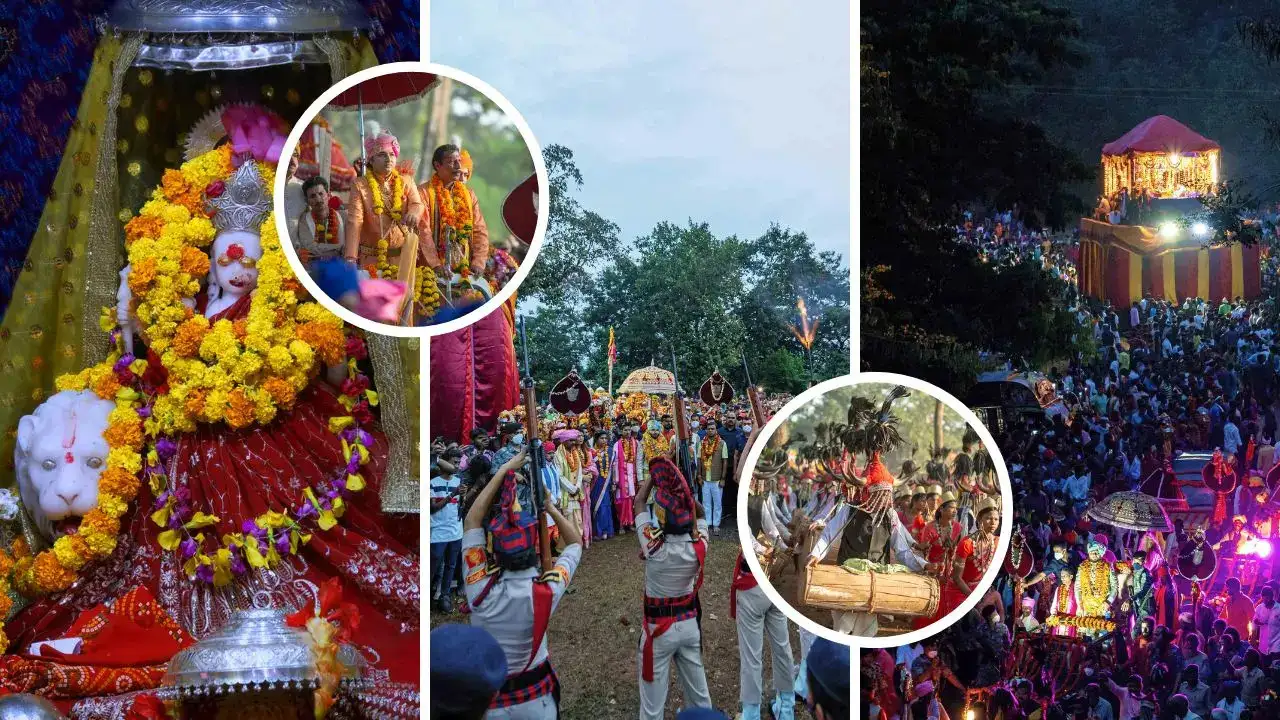How A 75-Day-Long Festival With No Ravan & No Effigies Became India’s Most Unique Dussehra Celebration
By Mallika Bhagat
Copyright timesnownews

Across much of India, especially in the North, the streets come alive with stalls selling Ravan effigies of every size and shape in the run-up to Dussehra. Burning of Ravan’s effigy, along with that of his brother Kumbhakaran and his son Meghanad, at the end of Ramleela enactments, marks the most ubiquitous part of Dussehra celebrations in India. But in Bastar, the tribal heartland of Chhattisgarh, Dussehra is a festival unlike any other. The celebrations stretch for 75 days. There is no Ravan, no crackling pyres, no staged battles between good and evil. Bastar Dussehra is celebrated as a community gathering, centered around tribal rituals and a local deity that reigns supreme in this part of India: Danteshwari. Bastar Dussehra: Of Tribal Lore And Legends Dense forests, waterfalls, temples, caves and wildlife: Bastar has rightly earned its popularity as one of Chhattisgarh’s most popular travel destinations. And its festivals are as much a part of the epithet that has been bestowed on this city – “the cultural capital” of Chhattisgarh. Among them is Bastar Dussehra. While much of India celebrates Dussehra over a single day or at most ten (Mysuru Dasara), Bastar begins its observance in the month of Shravan and continues until Ashwin’s full moon. Over the course of two and a half months, the festival moves through more than 20 distinct rituals, each carrying its own symbolism. From the first collection of sacred wood to penance rituals, processions, and the grand finale of the chariot procession, every stage sees the participation of many tribal communities in this region. Why No Ravan? Perhaps the most unique feature that merits this article on Bastar Dussehra is what it leaves out. Unlike in other parts of India, there is no effigy burning of Ravana. Instead, the festival is centered around a local deity called Goddess Danteshwari. In fact, this festival is also organised by the Royal Family of Bastar, and not the local or state governments which is often the case for other popular celebrations in India. If local legends are to be believed, Bastar Dussehra is said to be a festival that is over 600 years old. It was started by Maharaja Purushottam Dev in the 15th century. Stories tell of the king’s pilgrimage to Jagannath Puri, where he was gifted a sacred chariot, later broken into smaller chariots to be taken back to his capital. Chariots have since been central to the festival. When the capital shifted to Jagdalpur in the 17th century under Maharaja Dalpat Deo, the grand festival moved there as well. Over time, it became a central celebration, combining royal traditions with tribal rituals that honour the forest, the soil, and the deities of the region. Villages would participate in the festivities, bringing their gods and goddesses to Jagdalpur for a ceremonial gathering called ‘aamanvakhani’, accompanied by traditional music and instruments. Rituals And Responsibilities Bastar Dussehra is not a spectacle. It is an event that belongs to the tribes of the region. Each group plays a distinct role: one tribe builds the enormous chariot, another supplies the ropes, others bless it, and still others pull it through the streets of Jagdalpur. The responsibilities are shared, and the rituals demand both strength and faith. From Pata Jatra, the collection of wood, to Nisha Jatra, the night festival, and the symbolic circuits of the rath during Baahar Raini and Bheetar Raini, the celebrations are designed to engage the entire community. One of the most fascinating rituals that travellers are often surprised by is the final ritual known as Raini, when a massive, eight-wheeled wooden chariot carries the sacred umbrella of Goddess Danteshwari in a grand procession. In a symbolic act, members of the Madiya tribe “steal” the chariot and drag it through the streets, taking it to Kumhadakot (Baahar Raini), a village nearby. It is then brought back to Raj Mahal (Bheetar Raini). This fun ritual is an expression of tradition that replaces the spectacle of Ravan Dahan with something uniquely Bastar. A Festival Alive With Meaning Today, Bastar Dussehra continues to be a living tradition that attracts not only devotees but also travellers, anthropologists, and culture seekers. For visitors, it offers a glimpse into India’s incredible diversity, where the same festival can be celebrated in radically different ways depending on the landscape, the people, and their history. Here, Dussehra is not about a victory over evil but about the deep roots of tribal faith.



